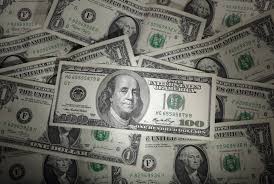By David Goodman and Mariko Ishikawa - Sep 13, 2012 2:24 PM GMT+0400
 The greenback slid toward a four-month low against the euro before the central bank also releases policy makers’ forecasts for unemployment, inflation and the expected path of the federal funds rate. Sweden’s krona fell against all but one of its 16 major peers as consumer-price inflation slowed more than economists forecast and unemployment increased. South Africa’s rand was the world’s worst performer for a second day as mining-industry labor unrest spread.
The greenback slid toward a four-month low against the euro before the central bank also releases policy makers’ forecasts for unemployment, inflation and the expected path of the federal funds rate. Sweden’s krona fell against all but one of its 16 major peers as consumer-price inflation slowed more than economists forecast and unemployment increased. South Africa’s rand was the world’s worst performer for a second day as mining-industry labor unrest spread.
The dollar dropped to the weakest in seven months versus the yen amid speculation the Federal Reserve will announce it will buy bonds under a program of quantitative easing that tends to debase the currency.
“We forecast QE and we have been for some time,” said Steven Saywell, head of currency strategy for Europe at BNP Paribas SA (BNP) in London. “We are very bearish on the dollar and dollar-yen is no exception. During periods of QE the dollar tends to fall fairly constantly.”
The dollar fell 0.2 percent to 77.71 yen at 11:13 a.m. London time after reaching 77.58, the least since Feb. 14. It slid 0.1 percent to $1.2907 per euro after touching $1.2937 yesterday, the weakest since May 11. The euro was little changed at 100.31 yen after gaining 0.5 percent to 100.42 yesterday.
The Dollar Index (DXY) held a two-day decline before the Fed concludes its two-day policy meeting at which economists surveyed by Bloomberg forecast a third round of QE will be announced.
QE3 Anticipation
The central bank is also predicted to extend the duration of its zero-interest-rate policy into 2015. Two previous series of bond purchases totaling $2.3 trillion have failed to revive the labor market, which Fed Chairman Ben S. Bernanke said last month is a “grave concern.”
“Anticipation of QE3 is very high,” said Yuji Kameoka, chief currency strategist at Daiwa Securities Co. in Tokyo. “The dollar may extend declines for some time, given that QE3 isn’t priced-in completely.”
The Dollar Index, which IntercontinentalExchange Inc. (ICE) uses to track the greenback against the currencies of six U.S. trading partners, was little changed at 79.679. It yesterday touched 79.522, the lowest since May 4.
Since December 2008, when the Fed began its asset-purchase programs, the index has dropped more than 8 percent.
The dollar has depreciated 1.6 percent in the past week, the worst performance among the 10 developed-nation currencies tracked by Bloomberg Correlation-Weighted Indexes. The yen was little changed and the euro advanced 0.8 percent.
Euro Challenges
The 17-nation shared currency strengthened against all but one of its major peers today even asGreece’s Prime Minister Antonis Samaras received the second refusal in four days from coalition partners over plans to reduce spending that are key to receiving international aid. It rose yesterday after a German court said the country can ratify the European Stability Mechanism, a 500 billion-euro rescue fund.
Samaras faces renewed opposition from Democratic Left leader Fotis Kouvelis and Pasok leader Evangelos Venizelos after a meeting yesterday over plans to reduce wages and pensions that have already been criticized by inspectors from the euro area, the European Central Bank and the International Monetary Fund as not going far enough.
Swedish consumer prices rose an annual 0.7 percent, the same as in July, Statistics Sweden said today. Inflation was estimated at 0.9 percent in a Bloomberg survey of 11 economists.
Rand Drops
The krona dropped 0.6 percent to 6.6062 per dollar and lost 0.8 percent to 8.5353 versus the euro.
South Africa’s rand weakened the most out of 16 major currencies tracked by Bloomberg for the second day after Anglo American Platinum Ltd. (AMS), the largest producer of the metal, said yesterday it suspended its Rustenburg operations after workers were intimidated. The threats follow stoppages at Lonmin Plc (LMI)’s Marikana mine and Gold Fields Ltd. (GFI)’s KDC West shaft.
About 43,000 people are either on strike at the three companies or staying away from work following conflict at Lonmin’s Marikana site last month in which 44 people died.
The rand fell 1.3 percent to 8.4414 per dollar.
New Zealand’s dollar traded near the strongest in more than four months after the Reserve Bank left its benchmark interest rate unchanged at 2.5 percent today, in line with expectations of all 16 economists surveyed by Bloomberg.
The so-called kiwi was little changed at 82.07 U.S. cents after rising to 82.38 yesterday, the strongest since April 30.
Switzerland’s franc fell for a second day against the euro after the Swiss National Bankannounced it would maintain its 1.20 limit against the shared currency.
The franc dropped 0.2 percent to 1.2113 per euro after declining to 1.2155 on Sept. 7, the weakest since Jan. 9.
To contact the reporters on this story: Mariko Ishikawa in Tokyo at mishikawa9@bloomberg.net;David Goodman in London at dgoodman28@bloomberg.net
To contact the editor responsible for this story: Paul Dobson at pdobson2@bloomberg.net